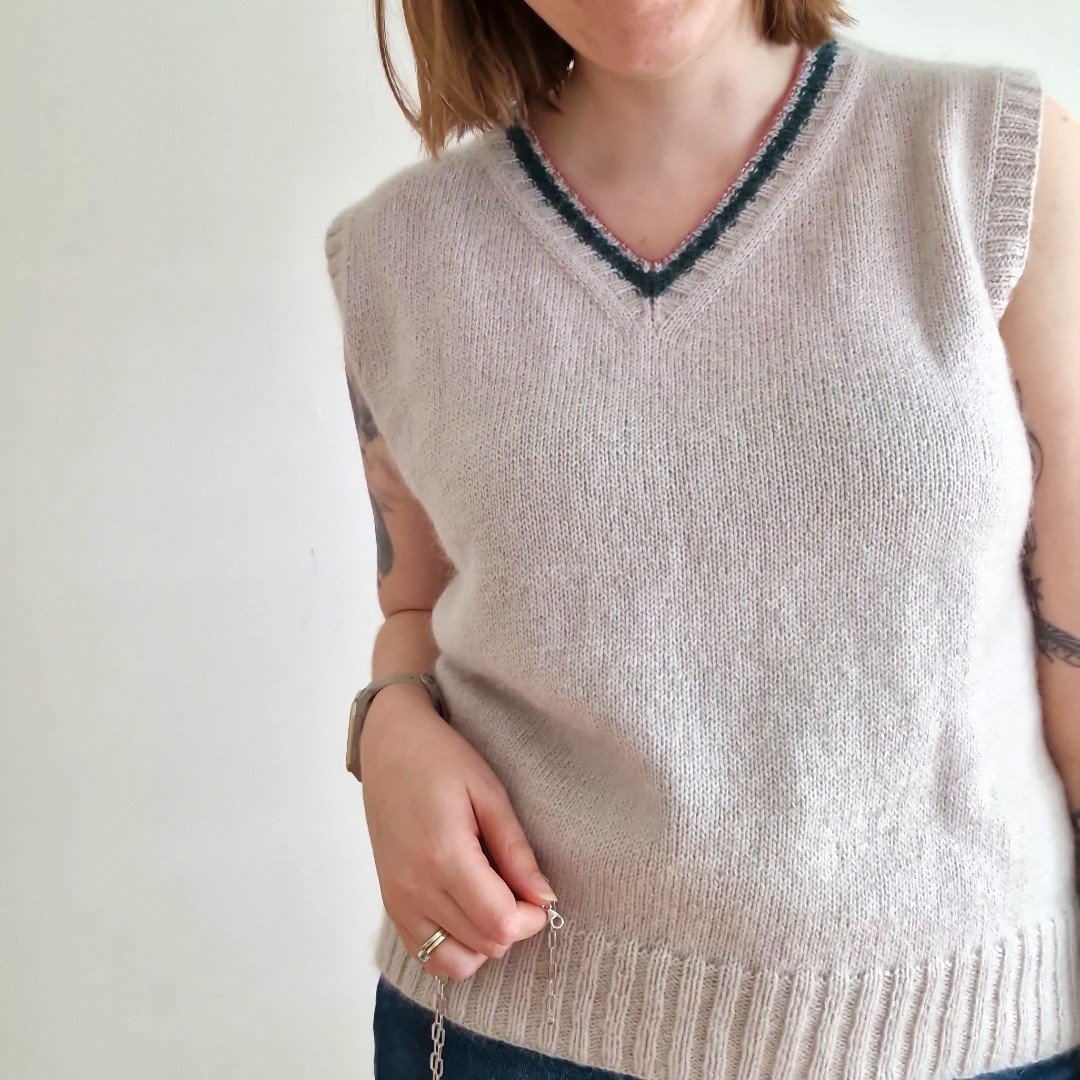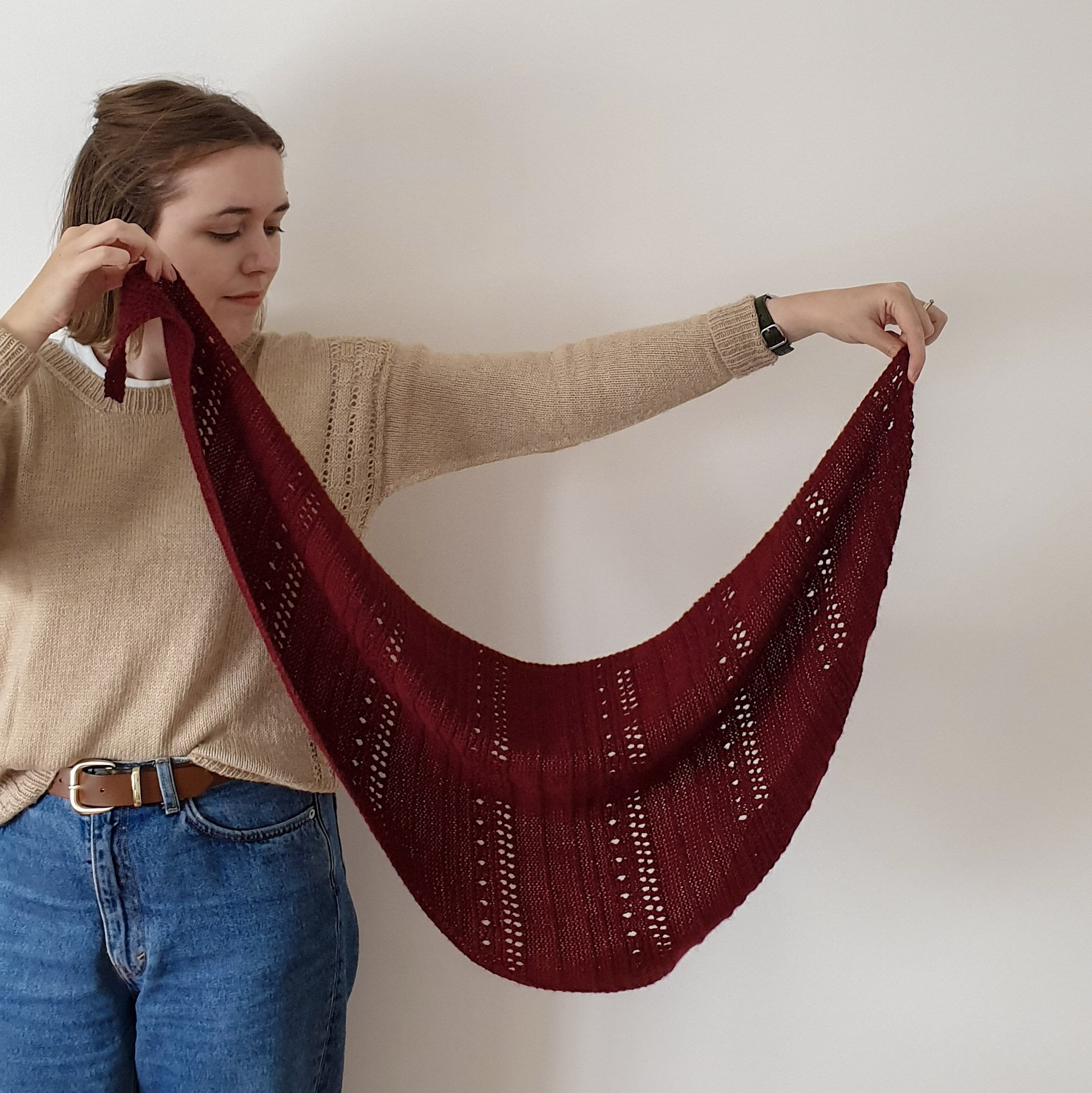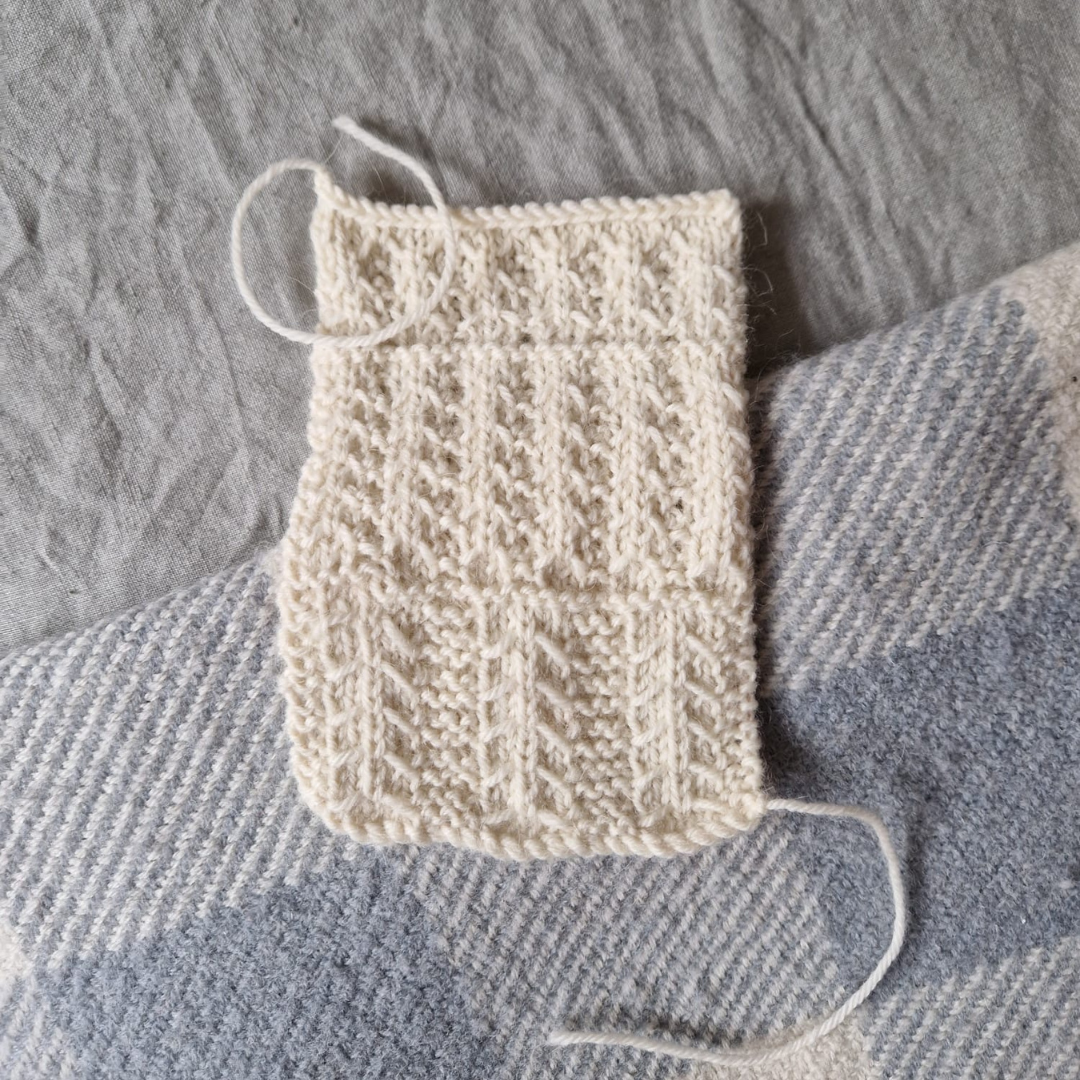4 Important Lessons Learned from my Knitwear Design Degree
Ten years ago, I had the pleasure of studying Knitwear Design at university. I’d actually wanted to take this exact course ever since I was a teenager so it was a dream come true to actually make it happen!
Whilst the course primarily focused on commercial knitwear design for the fashion industry, there are several things I learned (including how to draw a decent schematic) that have impacted who I am as a knitting pattern designer today. In this blog post, I am sharing those lessons with you.
Image description: Photo of a knitting machine with a pink and white striped piece on the needles. Behind it is lots of yarn in a basket and on a shelf. On top of the photo, it says “4 Important Lessons from my Knitwear Design Degree”.
Lesson 1: Your First Idea is Probably Not Your Best One
Before I studied Knitwear Design, I would come up with an idea of something I wanted to knit and then just do it. I didn’t spend much time considering other design ideas as I was just fixated on my first one.
As a result, my knits were not particularly thoughtful or considered. Truthfully, you could tell I hadn’t put much time into their design. It turns out that being lazy in the early stages of the design process is one of the best ways to get a distinctly average result.
At university, I was forced to change my ways. Initially, my motivation was just to tick all the boxes required of me by my tutors (classic Type A student…!) But, as time went on, I realised how beneficial it was to invest my time in the early stages of the design process. My knits started to look so much more interesting!
Image description: 6 models stand next to each other wearing layers of colourful, patterned and textural knitwear.
This is my final knitwear collection from 2012. As you can see, very different to my style today! But I am so proud of the hard work and creativity that went into this body of work.
These days, when I’m working on a new design, I always set myself a brief with a moodboard. I take my time playing around with different stitch and motif ideas, swatching them up to see how they look and behave.
I draw countless sketches, exploring different silhouettes, pattern placements and design details. It takes a long time but none of this is wasted time.
Let me be clear: my knitting pattern designs are by no means avant-garde. They’re not pushing any major boundaries or picking up on any unusual trends.
However, they are (in my opinion!) beautiful and very, very intentional, thinking carefully about what the maker wants to knit and wear at every step - even down to the trims. This is what makes them commercial and this is why they sell.
Lesson 2: Reflection is Crucial
During my time at university, we would have weekly tutorials with our knitwear tutors and a small group of fellow students. In this tutorial, we would each share what we were working on and give and receive feedback (good and bad!) on our projects.
This reflective process was invaluable. It’s so easy to get too “close” to your designs, to the point that you aren’t able to truly assess whether they’re going in the right direction. The tutorials enabled you to step back and look at your ideas with a more objective eye, evaluating what needs to be improved upon or further developed.
It was also wonderful to see other designers’ processes from start to finish, offering them ideas or troubleshooting problems along the way. A bonus is that their feedback could, in fact, benefit your own design projects too.
Image description: Graphic of a woman working on a mannequin in a fashion studio and underneath it, it says: “Knitting Pattern Design. 4 Big Lessons from my Knitwear Degree.”
After these sessions, we would have a clear list of action points to execute on and explore before our next tutorial. It kept us motivated and held us accountable to keep making progress every single week.
These days, I don’t have a group of knitting pattern designers to share my ideas and troubleshoot with (although I am considering setting one up - what do you think??) but I do sit down every couple of weeks with a friend of mine who also has a creative business. We chat through what we are working on, give each other ideas and make plans for the next couple of weeks. I can’t tell you how much more productive I am since we started doing this!
I also feel as though my tutorial experiences have really helped me when it comes to taking criticism regarding my work. Criticism can absolutely be a blessing, even if it can be hard to take initially.
At university, my tutors’ criticism was intended to push me to do better and the same can be said about your tech editor or your customers, for example. Rather than becoming defensive or taking their comments personally, neutrally evaluate their criticism and make concrete plans to improve if necessary. It is only going to push your knitting pattern design business in a positive direction!
Lesson 3: Make Design & Culture a Part of Your Daily Life
When I was a student, my days were full of activities that stimulated my creativity. I visited museums and galleries. I read magazines and books. I engaged with creative content online. I visited interesting fashion boutiques to see and feel clothing that excited me.
As a result, I had no trouble coming up with ideas for my next design project. In fact, I almost had too many! Design & culture was just a part of my life so creativity seemed to flow effortlessly from me.
Since graduating, starting work and now, becoming a parent, it is harder to follow my creative curiosities. I just don’t have the time to dedicate to it like I used to. However, I have noticed a massive difference in my own creativity when I don’t engage with design & culture on a regular basis. Creative block is a much more common occurrence.
For the past couple of months, I’ve been making an effort to immerse myself in beautiful things again in small ways that fit into my life as it is now. Watching films that inspire me. Visiting the library to browse interesting books. Engaging with online content that inspires and motivates me. Creativity is starting to flow out of me again and I have to say, it feels good.
Image Description: Birds eye view of a desk, with notebooks, a sketch and some knitting machine tools.
Time Management is The Cure for Overwhelm
When I was a student, we were often working on multiple projects all at once. I usually had one major design project, along with a more theoretical one and a couple of smaller briefs I would be working on for some kind of competition or award. It was a hell of a lot of work!
Being someone who is easily overwhelmed, I had to find a way of managing all of those projects and deadlines. The primary thing I did was plan ahead, creating a timeline for each project and what needed to be done and when. Based on this timeline, I would have a weekly schedule of what I needed to get done and this ensured that I was working regularly on each project, making consistent progress.
We all know how we each work best, and for me, I do my best work when I am calm and relaxed. I hate working to short deadlines and need time, space and freedom to fully explore my ideas without stress. That’s why I tried to give myself a buffer at the end of each project so that it didn’t feel like a sprint to the finish line.
As a knitting pattern designer today, I often have a few plates to spin. I have self-published designs I’m working on, designs for publications and yarn companies and of course, I have my students to support in Sweater Design School. Not to mention I only work part-time, as I am also looking after my 1-year-old most days! It’s a lot.
I have to use the same time management techniques I used as a student to ensure that I keep all of those projects moving forward successfully. My project plans now live inside of Asana, and honestly, I think my head might explode if I didn’t have somewhere to house all of those tasks, ideas and to-do lists.
You Don’t Need a Knitwear Degree
The years spent studying for my knitwear degree were some of the best (and hardest) of my life, but you don’t need to have taken a knitwear degree to learn from these lessons. Any new designer can implement these habits in their own lives to help them work more effectively and efficiently on their knitting pattern design projects.
Here’s a recap:
Invest time in fully exploring your design ideas before you settle on your final knitting pattern design to ensure you end up with a beautiful, thoughtfully designed finished garment.
Make time to reflect on the successes and failures of your knitting pattern designs, either alone or in a group, and make plans on how to improve next time.
Immerse yourself in design and culture as often as you can to help fill up your ideas bank.
Come up with a time management system for your design projects that works best for you - don’t leave it all to chance!

























